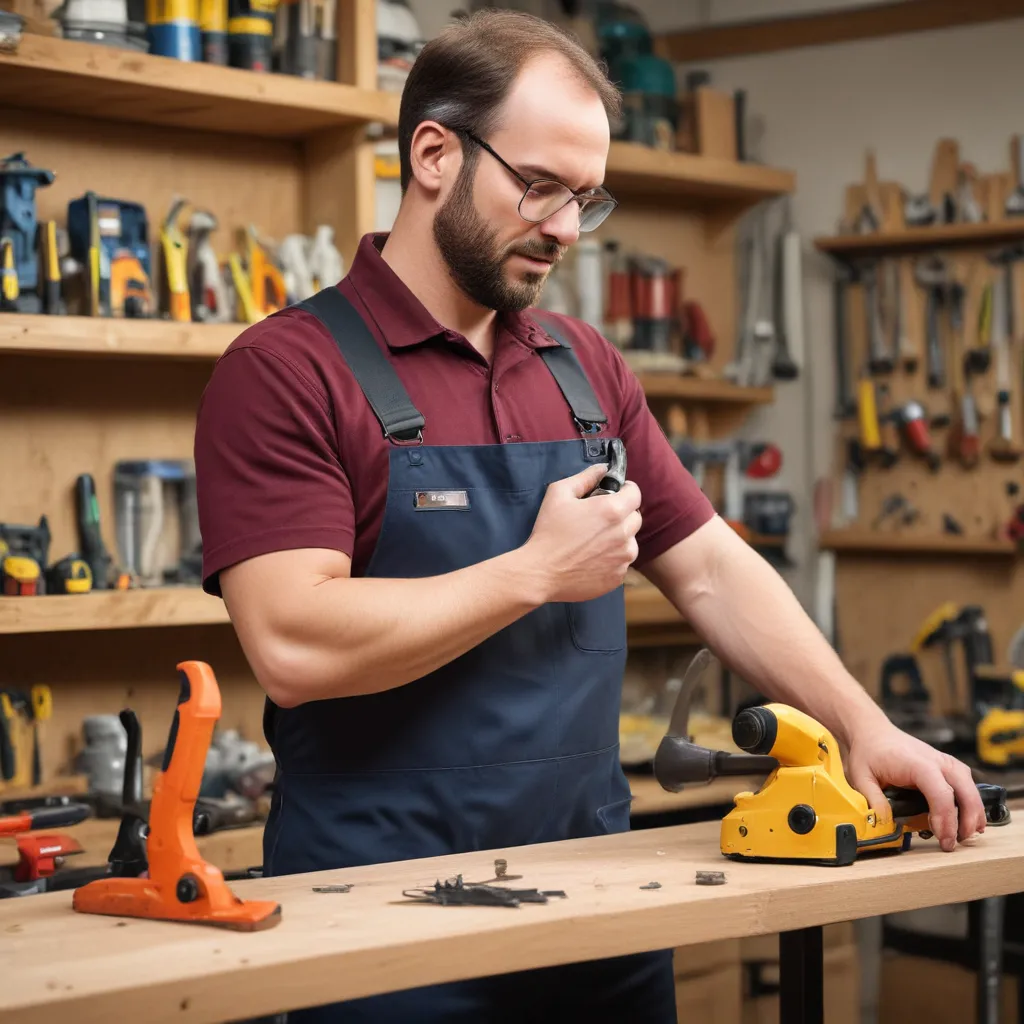
The Aches and Pains of Wrenching
As the owner of an RV and fleet vehicle repair shop in Orange County, California, I’ve seen my fair share of mechanics and technicians suffering from work-related aches and pains. Day in and day out, they hunch over engines, twist their bodies into awkward positions, and exert tremendous force while wielding heavy tools. It’s no wonder that musculoskeletal disorders are so common in our industry.
But I’m here to tell you that it doesn’t have to be this way. By investing in the right ergonomic shop tools, we can protect our most valuable asset – our hardworking employees. After all, a healthy and happy team is the foundation of any successful business.
The Ergonomic Advantage
Let’s start by defining what we mean by “ergonomic.” Simply put, ergonomics is the science of designing equipment and work environments to maximize productivity, comfort, and safety. When it comes to shop tools, ergonomic features can include:
- Adjustable handles and grips to accommodate different hand sizes and grip strengths
- Lightweight materials to reduce fatigue during prolonged use
- Ergonomic power tool designs that minimize wrist strain
- Shock-absorbing features to dampen vibrations
- Balanced weight distribution for improved control and reduced muscle tension
By incorporating these ergonomic principles into our tools, we can significantly reduce the risk of musculoskeletal injuries among our team. Imagine the difference it would make if our mechanics could perform tasks with less effort and less strain on their bodies.
The Cost of Cutting Corners
Now, I know what you’re thinking – “Ergonomic tools? That’s going to cost a fortune!” And you’re not wrong. Quality ergonomic equipment does tend to come with a higher price tag. But trust me, the long-term benefits far outweigh the initial investment.
Consider the costs associated with work-related injuries in the automotive repair industry. According to the Bureau of Labor Statistics, the median number of days away from work due to musculoskeletal disorders is a staggering 12 days. That’s 12 days of lost productivity, not to mention the medical expenses and workers’ compensation claims.
And the hidden costs can be even more significant. Decreased morale, high employee turnover, and the difficulty of finding skilled replacements can all take a toll on a business. Investing in ergonomic tools is not just about preventing injuries – it’s about creating a work environment that attracts and retains top talent.
Ergonomic Tools in Action
Now, I know what you’re thinking – “Okay, I’m convinced. But where do I even start?” Well, let me share some real-world examples of how ergonomic tools have transformed our shop.
One of the first things we did was to upgrade our impact wrenches. Instead of the heavy, vibration-inducing models we used to use, we now have lightweight, cordless impact wrenches with ergonomic grips and trigger designs. Our mechanics report that they can work for longer periods without the telltale tingling in their hands and arms.
We’ve also invested in adjustable creepers that allow our technicians to work in a more upright position, reducing the strain on their backs. And for tasks that require prolonged kneeling, we’ve outfitted our team with shock-absorbing knee pads to protect their joints.
But it’s not just the big-ticket items that make a difference. Even simple tools like screwdrivers and pliers can benefit from ergonomic design. We’ve replaced our old, straight-handled versions with models that feature contoured grips and angled heads, making it easier to apply the necessary force without twisting our wrists.
The Ripple Effect of Ergonomics
The beauty of ergonomic tools is that they don’t just benefit the individual user – they have a ripple effect throughout the entire organization. When our mechanics feel better, they’re more productive, more engaged, and less likely to take time off due to injuries. And that translates to happier customers, faster turnaround times, and a more profitable business.
But the real payoff comes in the form of improved employee morale and retention. When our team knows that we’re invested in their well-being, they feel valued and appreciated. And that goes a long way in building a loyal, dedicated workforce.
Conclusion: Investing in the Future
At the end of the day, the decision to invest in ergonomic shop tools is a no-brainer. Yes, it requires an upfront financial commitment, but the long-term benefits far outweigh the costs. By protecting the health and well-being of our employees, we’re not just safeguarding our business – we’re creating a brighter future for everyone involved.
So, if you’re an RV or fleet vehicle repair shop owner like me, I urge you to take a close look at your current tools and equipment. Where can you make ergonomic upgrades? What changes can you implement to reduce the physical strain on your team? Trust me, your mechanics will thank you, your customers will thank you, and your bottom line will thank you.
And if you’re looking for a repair shop that truly values the well-being of its employees, be sure to check out Orange County RV Repair. We’re proud to be at the forefront of the ergonomic revolution in the automotive industry, and we’re always happy to share our knowledge and experience with fellow shop owners. So, what are you waiting for? Let’s get to work, and let’s do it in a way that keeps our teams healthy, happy, and productive.
